While the regulations limit you to eight hours of flight time per day, they only limit duty time to 15 hours - even 16 hours in some cases. The company can schedule as little as 20 minutes between flights, or they may put in one or more "breaks" which can last up to several hours. Either way, at the end of a 6+ leg day, you're guaranteed to be tired.
So what all do I do between legs? After we shut down, I call in our "in times" to ops, and then do the parking checklist. I'll usually go in back to help the flight attendants cross seatbelts, pick up trash, and hokie the floor. After that I'll scrounge around the galley for some food or drink, or maybe make a food run inside the terminal. Once I'm back, I'll slide back into the right seat and launch into my "before start" flows.
First, I review the dispatch release and the weather enroute and at our destination. I verify that any alternate requirements are met, and that the fuel burn numbers look correct. If there's anything of note, I'll mention it to the captain.

Next, I listen to the current ATIS, copy our IFR clearance, and pull out the neccessary charts for departure. I look up our takeoff performance numbers and airport-specific engine failure procedures. All this is copied onto a takeoff data card. Again, if there's anything out of the ordinary, I'll run it by the captain.
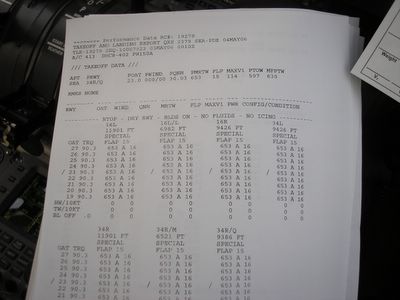


I set our landing altitude on the pressurization control panel...
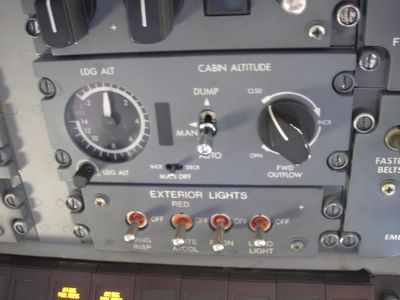
...arm the emergency lights...

...and set up the AFCS (ie flight director/autopilot).
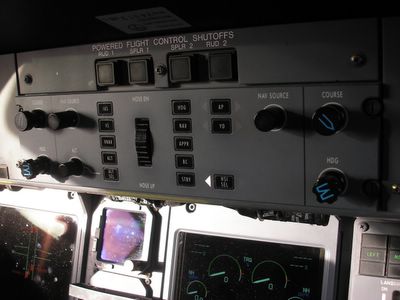
I set the altimeter and acceleration height on the PFD, and guess what we'll use for speed bugs.
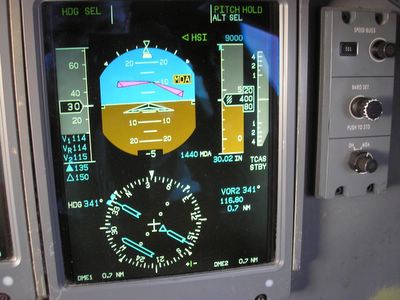
I program the flight plan into the FMS, crossfill it to the captain's FMS, and input the preliminary fuel and weight numbers.

Finally, I set the ARCDUs for departure - ie, tune the radios.
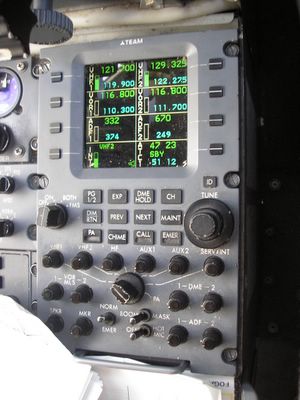
After that's done, there's nothing to do but run the "Before Start" checklist, wait for the captain to give me weight & balance numbers, put them into the FMS, and get my seatbelt on. Then it's onto the next leg...repeat as neccessary.
Update: Hmm, re-reading that, it sounds like I'm complaining about my excessive workload between flights, or the fact that the company schedules six leg days. That's not it at all. I can whip out my before start flows in under five minutes, and a quick succession of short legs makes the day go quicker, since takeoff & approach & landing is far more interesting than cruise flight. Of course, with the Megawhacker replacing Miniwhacker flying in Seattle, I may get a lot more 6-8 leg days sooner rather than later!





4 comments:
Cool summary of our before-start procedures!
Thanks for the very informative post. I love watching the Megawhackers approach & depart SEA and look forward to seeing more of them. Is QX retiring the miniwhacker? Will they keep short hops like SEA-BLI with the megawhacker taking over?
VXG, careful about "outing" the airline I work for. I know, it's painfully obvious who it is, but I don't mention the name of the company or equipment to keep the blog below the radar screen of Googling managers. My company doesn't have policies against blogging, but there's always that "first case," so no need to attract attention to myself.
We're not retiring the Miniwhacker. We have 2 Megas coming next month and 12 more before 4Q 2007; as they come online, the company plans to "remarket" about 9 of the 28 current Minis. That might mean selling them, might mean using them to try out new markets. We'll see. In any event, you'll probably still see Miniwhacker service to most of their current destinations, but it'll be supplemented by the Megawhacker.
Fascinating. Much more complicated than launching my little Cirrus. Good to know 'real' pilots take so much care. Do check out my site, www.modernpilot.com, and if you like it, perhaps you might like to link to it.
Post a Comment